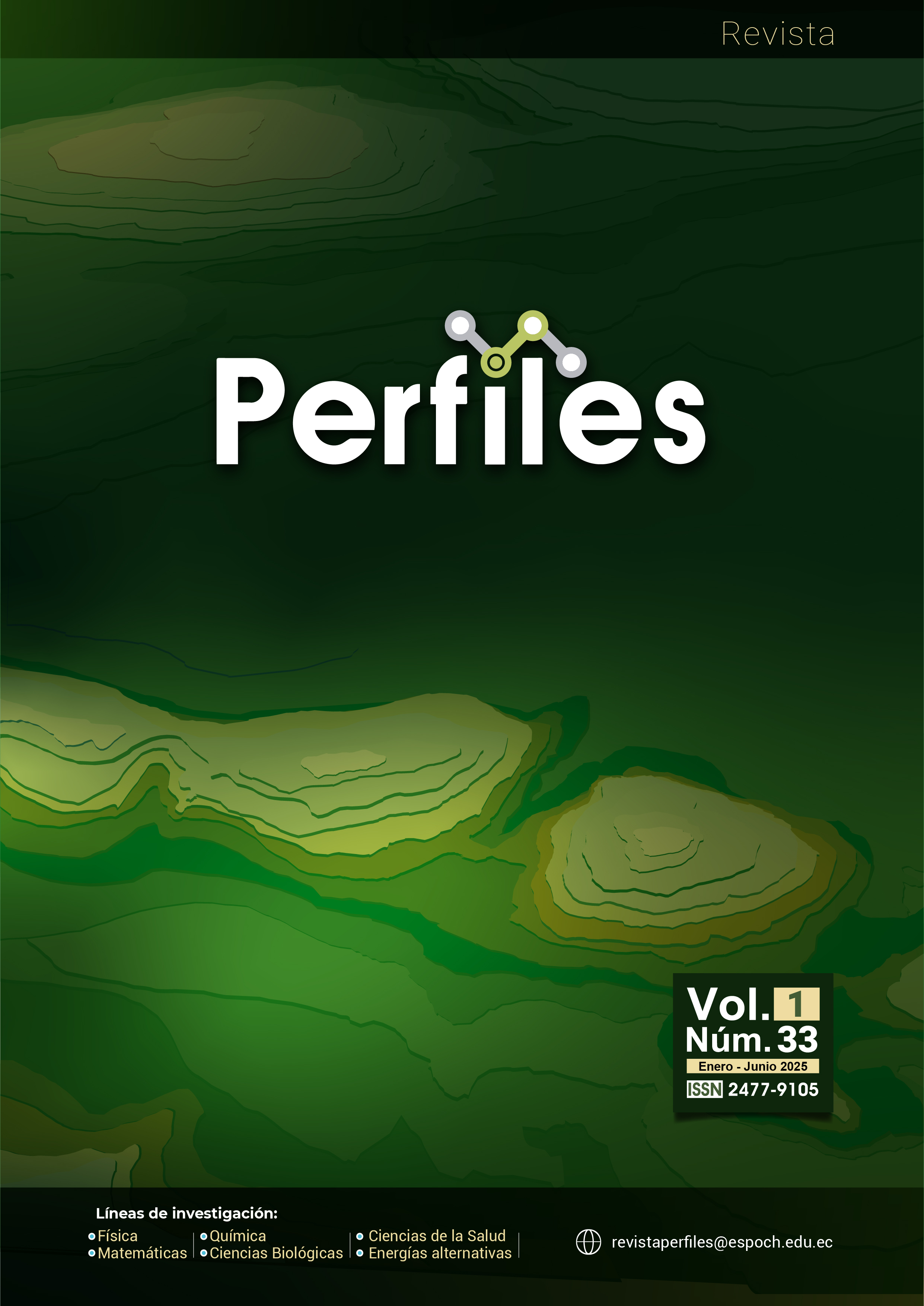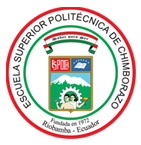Comparative study of four biological treatments for the use of organic solid waste
DOI:
https://doi.org/10.47187/perf.v1i33.318Keywords:
organic fertilizer, biomass, environment, market waste, biological treatmentsAbstract
Organic waste generated in the markets of a community in Ecuador, was subjected to four biological treatments: composting (T1): a pile of 1050 kg of waste; co-composting (T2): a pile of 900 kg of waste and 150 kg of straw; takakura (T3): a pile of 300 kg of waste and 50 kg of seed compost and vermicomposting (T4): 1 m2 bed with 60 kg of pre-composted waste. The market waste was mechanically shredded. The piles were placed in a semi-enclosed. In the organic fertilizers obtained, the pH (T1= 9.8; T2= 9.9; T3= 7.84 and T4= 8.01), electrical conductivity in dSm-1 (T1= 4.43; T2= 4.57; T3= 2.19 and T4= 0.56), percentage of organic matter (T1= 31.69; T2= 31.45; T3= 26.15 and T4= 25.32), percentage of macronutrients: nitrogen (T1= 0.81; T2= 2.33; T3= 1.04 and T4= 2.34), phosphorus (T1= 0.80; T2= 1.86; T3= 0.97 and T4= 2.00) and potassium (T1= 0.48; T2= 4.22; T3= 1.38 and T4= 3.76) and percentage of germination index (T1= 64.59; T2= 91.3; T3= 95.57 and T4= 100) were determined. The ANOVA statistical tool and the Tukey-b test were used (P < 0.05). The results indicated that vermicomposting was the best treatment.
Downloads
References
Sudharsan Varma V, Kalamdhad AS. Evolution of chemical and biological characterization during thermophilic composting of vegetable waste using rotary drum composter. Int J of Environ Sci and Technol. 2015 Jun 9;12(6):2015–24.
Jara-Samaniego J, Moral R, Pérez-Murcia MD, Paredes C, Gálvez-Sola L, Gavilanes-Terán I, et al. Urban Waste Management and Potential Agricultural Use in South American Developing Countries: A Case Study of Chimborazo Region (Ecuador). Commun Soil Sci Plant Anal. 2015 Feb 27;46(sup1):157–69.
Razza F, D’Avino L, L’Abate G, Lazzeri L. The Role of Compost in Bio-waste Management and Circular Economy. In: Benetto E, Gericke K, Guiton M, editors. Designing Sustainable Technologies, Products and Policies: From Science to Innovation. Cham: Springer International Publishing; 2018. p. 133–43.
Alfa MI, Adie DB, Igboro SB, Oranusi US, Dahunsi SO, Akali DM. Assessment of biofertilizer quality and health implications of anaerobic digestion effluent of cow dung and chicken droppings. Renew Energy. 2014 Mar;63:681–6.
Bernal MP, Alburquerque JA, Moral R. Composting of animal manures and chemical criteria for compost maturity assessment. A review. Bioresour Technol. 2009 Nov;100(22):5444–53.
Vico A, Pérez-Murcia MD, Bustamante MA, Agulló E, Marhuenda-Egea FC, Sáez JA, et al. Valorization of date palm (Phoenix dactylifera L.) pruning biomass by co-composting with urban and agri-food sludge. J Environ Manag. 2018 Nov;226:408–15.
Rich N, Bharti A, Kumar S. Effect of bulking agents and cow dung as inoculant on vegetable waste compost quality. Bioresour Technol. 2018 Mar;252:83–90.
Honobe Y. El Metodo Takakura, herramienta de responsabilidad ambiental. Quito: Publiasesores. 2013;
Maeda T. Reducing waste through the promotion of composting and active involvement of various stakeholders: Replicating Surabaya’s solid waste management model. 2009;
Vargas, M. R. N. 2010. Vermicompostaje en el reciclado de residuos agroindustriales. In: XII Congreso Ecuatoriano de la Ciencia del Suelo. Santo Domingo, 17-19 de noviembre del 2010. Santo Domingo de los Tsáchilas, Ecuador. 43 p
Moreno J, Moral R, García M, Pascual J, Bernal M. Vermicompostaje: procesos, productos y aplicaciones. Mundi-Prensa. Vol. 5. Red Española de Compostaje; 2014.
Domínguez J. State-of-the-Art and New Perspectives on Vermicomposting Research. In: Earthworm Ecology. CRC Press; 2004. p. 401–24.
Aira M, Monroy F, Domínguez J. Changes in bacterial numbers and microbial activity of pig slurry during gut transit of epigeic and anecic earthworms. J Hazard Mater. 2009 Mar;162(2–3):1404–7.
Gómez-Brandón M, Aira M, Lores M, Domínguez J. Changes in microbial community structure and function during vermicomposting of pig slurry. Bioresour Technol. 2011 Mar;102(5):4171–8.
Domínguez J, C. A. Edwards, Subler S. ACOMPARISON OF VERMICOMPOSTING AND COMPOSTING. 1997;57–9.
Lazcano C, Gómez-Brandón M, Domínguez J. Comparison of the effectiveness of composting and vermicomposting for the biological stabilization of cattle manure. Chemosphere. 2008 Jul;72(7):1013–9.
Hait S, Tare V. Optimizing vermistabilization of waste activated sludge using vermicompost as bulking material. Waste Manag. 2011 Mar;31(3):502–11.
Villegas-Cornelio VM, Laines Canepa JR. Vermicompostaje: I avances y estrategias en el tratamiento de residuos sólidos orgánicos. Rev Mex De Cienc Agric. 2017 Aug 11;8(2):393–406.
García J, Villareal M, Sánchez P, Parra S, Hernández S. Fertilización con vermicomposta en maíz criollo y su tasa de descomposición en el suelo. RIAA. 2013;41–7.
Fernández M. Aplicación de la tecnología del vermicompostaje para la valorización agronómica de residuos y detrios de cultivos de invernadero. Universidad de Granada; 2011.
Reglamento (UE) 2024/1157 del Parlamento Europeo y del Consejo. Diario oficial de la Unión Europea. 2024. Disponible en. https://www.boe.es/doue/2024/1157/L00001-00145.pdf)
Kalamdhad AS, Singh YK, Ali M, Khwairakpam M, Kazmi AA. Rotary drum composting of vegetable waste and tree leaves. Bioresour Technol. 2009 Dec;100(24):6442–50.
Ali M, Kazmi AA, Ahmed N. Study on effects of temperature, moisture and pH in degradation and degradation kinetics of aldrin, endosulfan, lindane pesticides during full-scale continuous rotary drum composting. Chemosphere. 2014 May;102:68–75.
Dong-Shen DS, Yang YQ, Huang HL, Hu LF, Long YY. Water state changes during the composting of kitchen waste. Waste Manag. 2015 Apr;38:381–7.
Senthil D, Kumar P, Kumar V, Anbuganapathi G. Impact of biofertilizers on growth and reproductive performance of Eisenia Fetida (Savigny 1926) during flower waste vermicomposting process. Annu Res Rev Biol. 2013;3:574–83.
Paredes C, Roig A, Bernal MP, Sánchez-Monedero MA, Cegarra J. Evolution of organic matter and nitrogen during co-composting of olive mill wastewater with solid organic wastes. Biol Fertil Soils. 2000 Nov 3;32(3):222–7.
Moreno Casco J, Moral Herrero R. Compostaje. Mundi-Prensa Libros; 2008.
González-Fernández J, Galea Z, Álvarez JM, Hormaza JI, López R. Evaluation of composition and performance of composts derived from guacamole production residues. J Environ Manag. 2015;147:132–9.
BOE. Boletín del Estado BO. Real Decreto 506/2013, de 28 de junio, sobre productos fertilizantes. BOE. 2013;164:51119–207.
Bender SF, Wagg C, van der Heijden MGA. An Underground Revolution: Biodiversity and Soil Ecological Engineering for Agricultural Sustainability. Trends Ecol Evol. 2016 Jun;31(6):440–52.
Medina-Sauza RM, Álvarez-Jiménez M, Delhal A, Reverchon F, Blouin M, Guerrero-Analco JA, et al. Earthworms Building Up Soil Microbiota, a Review. Front Environ Sci. 2019 Jun 7;7.
Sharma K, Garg VK. Solid-State Fermentation for Vermicomposting. In: Current Developments in Biotechnology and Bioengineering. Elsevier; 2018. p. 373–413.
Dhiman D, Sharma R, Sankhyan NK, Sepehya S, Sharma SK, Kumar R. Effect of regular application of fertilizers, manure and lime on soil health and productivity of wheat in an acid Alfisol. J Plant Nutr. 2019 Nov 26;42(19):2507–21.
Zucconi F, Pera A, Forte M, DeBertolli M. Evaluating Toxicity of Immature Compost. Biocycle. 1981;22:54–7.
Garg V. K., Suthar S., Yadav, A. Management of food industry waste employing vermicomposting technology. Bio. Technol. 2012. 126:437-443.
Aira M., Sampedro L., Monroy F., Domínguez, J. Detritivorous earthworms directly modify the structure, thus altering the functioning of a microdecomposer food web. Soil Biol. Bio. 2008. 40:2511-2516.
Published
How to Cite
Issue
Section
License

This work is licensed under a Creative Commons Attribution-NonCommercial 4.0 International License.


























